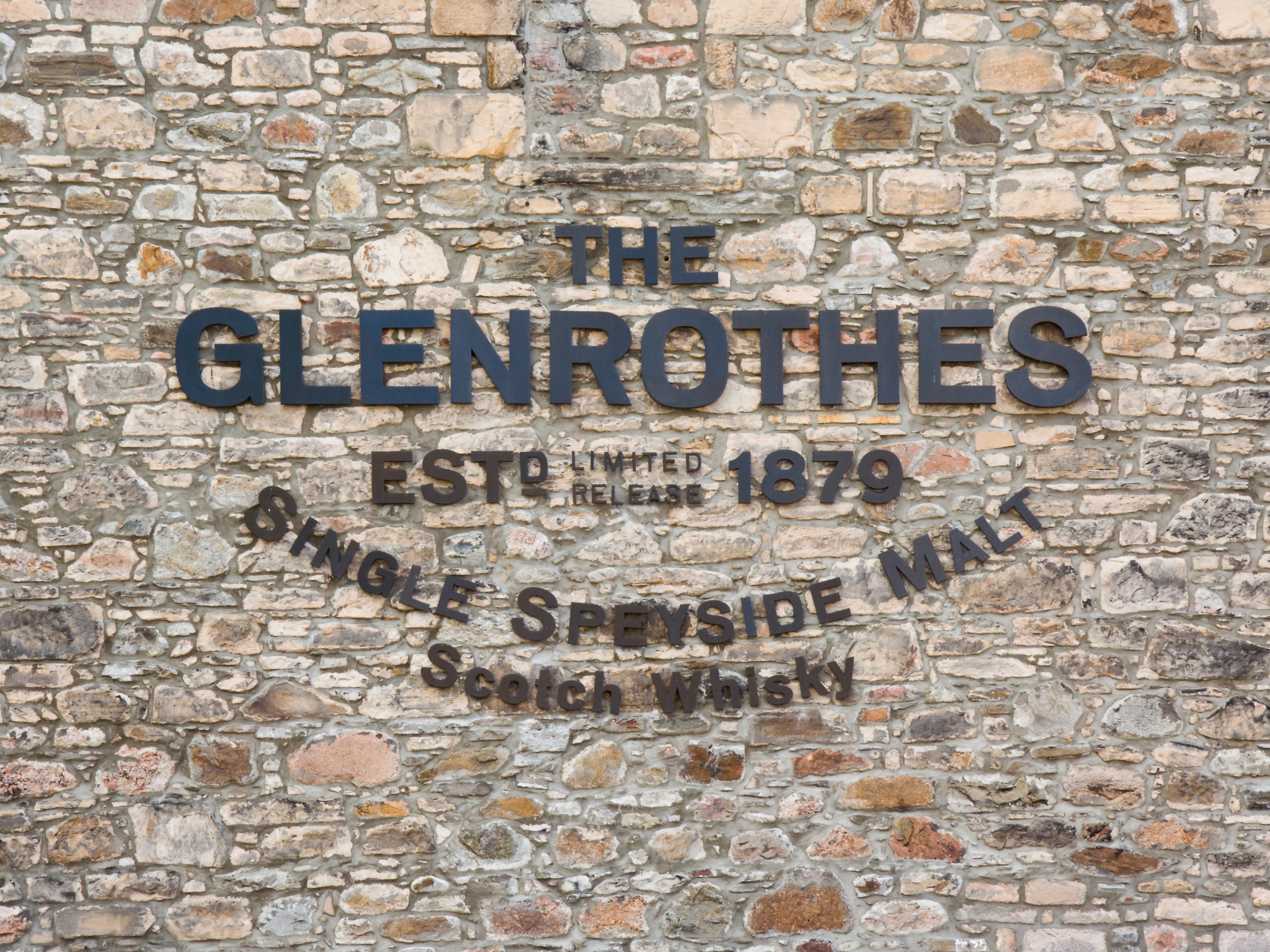- The Glenrothes
Infobox Scottish Distillery
Name = Glenrothes
Type = Speyside

Image size = 250
Caption = The Glenrothes distillery
Location = Rothes
Owner =Edrington Group
Founded = 1878
Status = Operational
Source =
Mothballed =
Stills =
Capacity =
Brand 1 = Glenrothes
Type 1 =
Age 1 = Select Reserve
Cask 1 =
Brand 2 =
Type 2 =
Age 2 =
Cask 2 =The Glenrothes is a single malt
Scotch whisky , produced at the Glenrothes Distillery, beside the Burn of Rothes in the Speyside region. The Glenrothes is used in blended scotch whiskies such as Cutty Sark andThe Famous Grouse . The Glenrothes is owned byEdrington Group .Production
The Glenrothes is mainly matured in Spanish ex-
Sherry casks, and some ex-Bourbon casks. The Glenrothes is unique compared to other single malts in that, beginning in 1994, the bottlings are not determined by age but byvintage . Besides the signature line in which each year of production is bottled as one vintage, The Glenrothes is also sold as "Select Reserve", a recently introduced non-vintage line. Special bottlings include "Single Cask" bottles, which are taken from one singlecask of whisky from a particularly exceptional year. Single casks released include: 1966 Cask 1438, 1966 Cask 1427, 1967 Cask 6994 and 1967 Cask 6998. In the late 1980s, a few years years before Glenrothes Distillery decided to bottle The Glenrothes as vintages, some casks of whisky prior to 1974 were left to mature together. These casks were bottled as a 30-year-old Glenrothes. Only 1134 bottles were produced.Character
The house style is a warming, mouth-coating creamy spirit, with the classic Speyside "pear drop" character. Tasting notes frequently also mention the descriptors "lemony", "grassy", "
aniseed ", "liquorice" and "toffee".fact|date=March 2008The distillery
The distillery was built in 1878 by James Stuart & Co, who then also worked the nearby Macallan distillery. The first whisky ran off the
still s on the28 December 1879 , the same day as the Tay Bridge disaster.The distillery itself had a shaky start and a chequered history. Over-proof whisky is notoriously highly flammable and the distillery has paid the price. Extension work began in 1896 on a second malt kiln, and an increase in stills from two to four but, before the work was finished, a fire in December 1897 caused serious damage. The distillery saw further damage with a serious explosion in 1903.
Then, in 1922, a fire in Warehouse Number One caused the loss of 200,000 imperial gallons (900,000
litre s) of whisky. As barrels exploded in the heat, the maturing whisky gushed into the adjacent Burn of Rothes, where locals were reported to have lifted water by the bucketful.fact|date=March 2008 Another fire in 1962 afforded the opportunity for expansion and a further re-build in 1982 extended the still hall to five wash stills and five spirit stills.External links
* [http://www.glenrotheswhisky.com/ The Glenrothes website]
Wikimedia Foundation. 2010.
